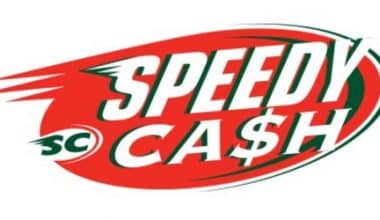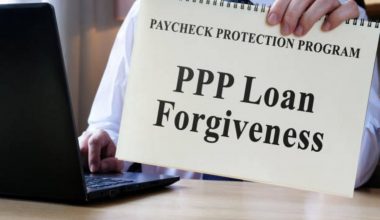You’re wondering how to get rid of PMI from an FHA loan with equity without refinancing. This article will give you all the information you need on how to get rid of PMI early! The interest and principal repayments on your mortgage aren’t the only things you have to pay.
David Dye, the owner of California’s Goldview Realty and a registered California mortgage broker, says all these factors affect how much PMI you’ll pay. Keep reading to unveil more!
What is PMI or Private Mortgage Insurance?
If your loan-to-value ratio (LTV) is less than 80%, you’ll have to pay PMI, which is a sort of mortgage insurance. If you put less than 20% down on a property, the lender sees it as a higher risk, and therefore you’ll be required to pay for PMI.
A government-backed loan, like an FHA loan, comes with additional mortgage insurance costs. Because these loans are backed by the federal government, mortgage insurance (MI) is not private.
PMI is not the same as mortgage insurance for government-backed loans, which are insured by the Federal Housing Administration. If you default on your mortgage, you’ll be covered by the lender’s mortgage insurance.
As a general rule, PMI will cost you no more than 2% of your annual mortgage total, but it can be much less. In most cases, PMI is included in your monthly mortgage payment. PMI can, however, be eliminated.
Three Ways to Get Rid Of PMI
It’s critical to know the requirements ahead of time so that you can get rid of your PMI.
According to Walda Yon, chief housing programs officer at the Latino Economic Development Center, it is normally necessary to improve the property’s value, and equity, or pay the mortgage for a set number of years to get rid of PMI.
You will also have to pay mortgage insurance for two or five years before you can get rid of PMI with equity. This is called a “seasoning period.”
Strong payment history and current mortgage payments are also prerequisites to get rid of PMI on an FHA Loan.
Let’s take a proper look at the three ways available:
#1. Request PMI Cancellation at 80% of LTV
To avoid paying PMI if you didn’t have enough equity at the time of purchase, you’ll need to put down at least 20% of the purchase price as a down payment.
Even if your loan-to-value ratio (LTV) falls below 80 percent, your lender won’t instantly get rid of PMI premiums. You’ll need to get in touch with us and ask for it.
Your lender may want an evaluation to prove the property’s value hasn’t declined, but not always. You may be eligible to reduce PMI if the home’s value has increased due to appreciation or upgrades.
Because if you waive PMI with a reappraisal, it may trigger a seasoning period, so talk to your lender first.
Dye advises contacting your loan servicer first to learn about how to get rid of PMI early. Many lenders may require borrowers to pay for the appraisal, which can go as high as $500. Running the numbers is the best way to ensure that you’re saving.
#2. Wait for the Automatic Cancellation of PMI at 78% LTV.
Your lender is required to automatically cancel your PMI coverage by the Homeowners Protection Act on the day that your loan-to-value ratio will reach 78% based on the original payment schedule.
If you make extra payments and your loan-to-value ratio reaches 78% earlier than intended, contact the lender to get PMI eliminated early.
#3. Refinance Your Loan
Refinancing your mortgage may be your sole option for how to get rid of PMI early, depending on your specific scenario. For the most part, this is the case with FHA and USDA loans.
Closing expenses, which range from 2% to 6% of the loan sum, must be taken into account when refinancing to get rid of PMI. A tiny monthly PMI rate may not be worth paying hundreds of dollars to get rid of.
You can incorporate refinancing costs into your new loan, but you’ll need enough equity to cover them and keep your LTV below 80%.
It may also make sense to refinance a traditional mortgage to avoid the seasoning period. If you’ve made big renovations to your property or live in a rapidly appreciating neighborhood, PMI may be eliminated early.
Regardless of how long you have had the initial mortgage, you can refinance to remove the PMI. However, you should compare the benefits of avoiding PMI against the cost of refinancing to get rid of PMI or FHA loan.
Other Ways to Get Rid of PMI With Equity
In many cases, you can avoid PMI by making a big down payment on a home or by slowly building up the equity in the property. However, these are not the only ways to avoid PMI.
There are more, though more difficult, approaches to completing the task at hand. Although these strategies won’t be appropriate for everyone, it’s important to have a solid understanding of how they operate.
This will help ensure that you don’t end up avoiding PMI by making an uninformed choice.
#1. No PMI Mortgages
Pay attention to the interest rate of the mortgage if the lender advertises that they do not require private mortgage insurance (PMI) even if the down payment is less than 20 percent.
According to Dye, it’s a marketing trick on the part of many lenders, who will promise no PMI with as little as 5 or 10 percent down payment.
The interest rate is set higher to make up for the cost of PMI. You may wind up paying more for the loan overall if the interest rate is higher. One day, you might not have to pay PMI premiums, but your interest rate will be higher.
Even a moderate increase in the interest rate can result in enormous additional expenses, and this is especially true for loans with longer repayment terms.
For instance, an increase in the interest rate of a quarter of a percentage point could result in a $10,000 increase in the total amount that you are responsible for repaying on a loan with a principal balance of $200,000.
Therefore, if you are considering a loan that does not require PMI, compare the interest rate to that of other loans to ensure that you will be saving money.
#2. Piggybacking A Second Loan
You may just need to put down 5 or 10% of a home’s price to avoid private mortgage insurance (PMI).
According to Thomas Bayles, senior vice president at Mortgage Capital Partners in Los Angeles, the lender is typically mainly worried about the LTV on the initial mortgage loan.
Bayles has helped homebuyers avoid PMI by placing a 10% down payment and financing the remaining 10% with a home equity line of credit.
If you want to adopt this technique, do your research and make sure the numbers add up.
Second mortgages and traditional home loans have higher interest rates than HELOCs, which have variable rates that may rise after an initial period.
A HELOC has a shorter repayment schedule than a normal mortgage and may feature prepayment fees or a balloon payment.
Therefore, you must always understand how a HELOC may affect your monthly payments in the future. If you want to get rid of PMI with equity, piggybacking loans may be an option for you.
Before you do so, however, you should make sure you understand all the ins and outs of a second loan.
In every other case, you should continue to use one of the more conventional approaches to preventing PMI.
#3. VA Mortgages
Mortgages that have the support of the United States Department of Veterans Affairs never need to buy mortgage insurance.
However, if you are interested in obtaining a VA loan, you need to take into consideration the front-end funding cost, which may be as high as 3 percent of the total loan amount.
It may be cheaper than PMI, but it might not be as good a deal as it seems.
This will depend on the cost of the funding fee. Certain veterans may be exempt from having to pay the financing charge. It’s in your best interest to discuss a VA loan with your current lender or the VA representative in your region.
Conclusion
As earlier said, as a risk reduction, mortgage lenders ask borrowers with low down payments to buy PMI. It is often required by lenders for mortgages that represent more than 80 percent of the value of a home.
If you are unable to repay your loan, the bank will receive a portion of its original investment thanks to the PMI. Private mortgage insurance, does not, of course, cover the total value of the mortgage.
If you default on your mortgage, the bank will sell the property to collect some of its losses. We hope this article on how to get rid of PMI without refinancing was helpful to you!
How to Get Rid of PMI FAQs
How Can You Get Rid of PMI on a Fha Loan?
Strong payment history and current mortgage payments are also prerequisites to get rid of PMI on an FHA Loan.
What is PMI or Private Mortgage Insurance?
A PMI or private mortgage insurance is a sort of mortgage insurance.
- EQUITY INDEXED ANNUITY: Definition, Pros, and Cons
- Sweat Equity: Definition & How to Calculate it
- EQUITY RISK PREMIUM: Definition, Example & How to Calculate It
- STOCKHOLDERS EQUITY: Formula and How It’s Calculated
- TOTAL EQUITY FORMULA: Overview, Formula, and Examples.
- OWNERS’ EQUITY: Definition, Formula, Calculations, and Applications






